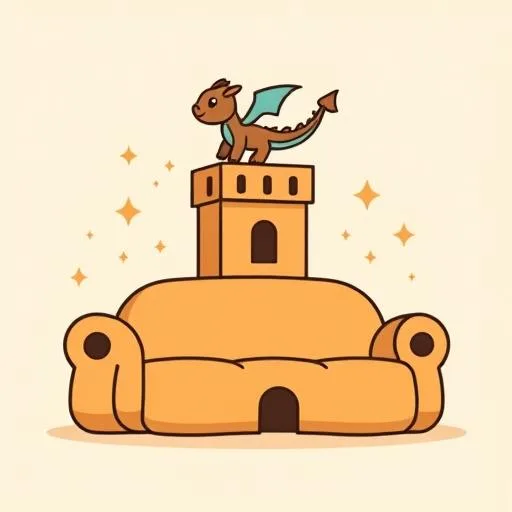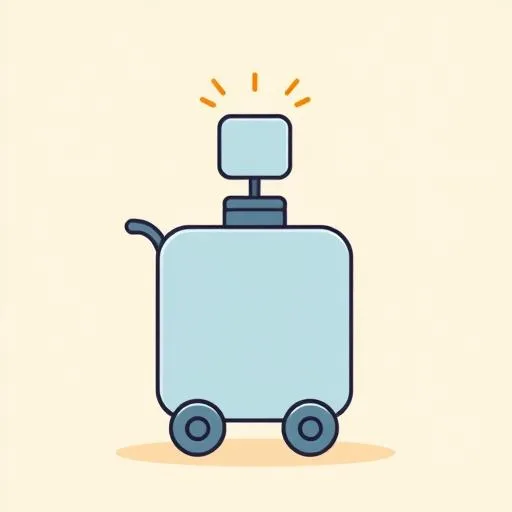
Have you ever watched your kid build a magnificent fortress out of sofa cushions and cardboard boxes, then narrate an epic saga happening within its walls? The imagination is just bursting out! Now, what if you could hand them a magic wand—a tool that could bring those incredible stories to life, not on a flat screen, but as a shimmering, three-dimensional world right there in the room with you? That’s the thought that just lit up my mind when I read about Ambow Education’s new HybriU® 3D Mobile Station. It sounds like something from a sci-fi movie, but it’s real, and the possibilities for our kids? Mind-blowing! This is where AI in education meets pure creativity.
How Does the Imagination Engine Come to You?

Okay, let’s break this down because it sounds super technical, but the idea behind it is pure, simple magic. Ambow has essentially packed an entire cinematic 3D production studio into a single, portable cart. A cart! This isn’t some behemoth machine locked away in a Hollywood studio. It’s a self-contained unit designed to roll into everyday environments—a classroom, a community center, you name it. It captures, processes, and displays interactive 3D experiences in real-time. Think of it less as a camera and more as an ‘imagination engine.’ It’s designed to take what’s real and physical and blend it with the boundless possibilities of the digital world.
For years, 3D has been something we passively consume. We put on glasses and watch a movie. But this flips the script entirely! It’s about *creation*. The portability is the game-changer here. It means the tools for world-building are no longer confined to specialized labs. They can meet our kids where they are, transforming a school gymnasium into the Amazon rainforest for a science lesson or the local library into ancient Rome for a history project. It’s about breaking down walls, literally and figuratively, and letting creativity flourish anywhere. This is a thrilling step forward in AI in education, making it accessible and dynamic.
What Is the ‘Phygital’ Playground for Kids?

Ambow uses a term that I absolutely love: ‘phygital’—a blend of physical and digital. YES! This is it! This is the sweet spot we’re all trying to find as parents, isn’t it? We want our kids to have their hands in the dirt, to build with blocks, to run around outside. But we also know that the world they’re growing into is digital. The answer isn’t to reject one for the other, but to build a bridge between them. ‘Phygital’ learning does exactly that.
Imagine my daughter, who is all about building things right now. Last weekend, we spent an entire afternoon constructing an elaborate city from recycled boxes. She had a story for every building, every paper-towel-roll tower. Now, picture a tool like the HybriU 3D Mobile Station rolling in. Suddenly, we could project digital characters that walk through her physical city. We could simulate a rainstorm or a sunny day, watching how the light plays on her creations. The physical act of building is enhanced, not replaced. Her hands-on creation becomes the stage for an immersive digital story. This approach to AI in education doesn’t pull kids out of reality; it deepens their engagement with it. It’s learning that you can touch, see, and feel, and it’s unbelievably exciting!
How Can We Nurture Creators, Not Just Consumers?

Here’s what really gets my heart racing: this kind of technology nurtures a completely different mindset. For so long, our interaction with screens has been about consumption. We watch, we scroll, we absorb. But tools like this are fundamentally about production. They hand the director’s chair to our kids. They’re not just watching the story; they are telling it. They’re not just learning about ecosystems; they are building them.
This shift is CRUCIAL. The future won’t be about who can memorize the most facts, but who can solve problems creatively, who can collaborate on a vision, and who can tell compelling stories. By giving children access to real-time 3D production, we’re giving them a new language to express their ideas. It’s like handing a paintbrush to a young artist or a violin to a budding musician. We’re providing a powerful medium for their innate creativity. The potential for using this kind of AI in education to unlock a child’s unique voice is just staggering. It’s about empowering them to be the architects of their own worlds, both literally and metaphorically.
What’s Our Role as Parents in This Adventure?

So, when we hear about incredible new technology like this, what’s our role as parents? It’s not to be intimidated or to worry about another screen. It’s to be curious, hopeful, and present. It’s to become the most enthusiastic co-adventurers our kids could ask for! Our job is to sit on the floor with them, ask amazing questions, and marvel at the worlds they build.
We can be the ones who say, “That’s an amazing castle! What if we made a friendly dragon fly around the tallest tower?” We can help them balance the digital magic with the simple joy of a walk in the park. The technology is just a tool. The real magic happens in the connection, the shared discovery, and the encouragement we pour into them. It’s about fostering a spirit of wonder, reminding them that their ideas are powerful and worthy of being brought to life in the most spectacular ways imaginable.
Seeing innovations like Ambow’s makes me feel so incredibly hopeful. We’re not just preparing our kids for the future; we’re giving them the tools to design a better, more creative, and more connected one. And honestly, I can’t wait to see what they build.
Source: Ambow Education Launches HybriU® 3D Mobile Station, Redefining 3D Production and Broadcasting with Seamless Portability, Globe Newswire, 2025/09/09
